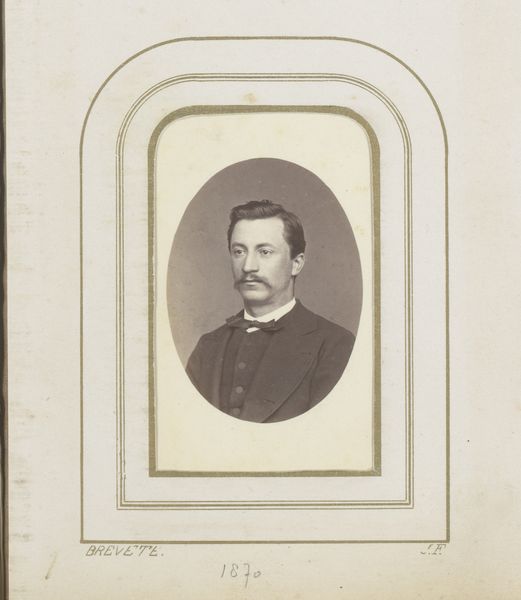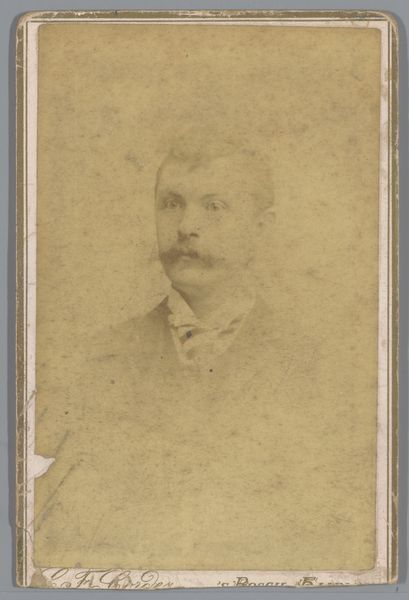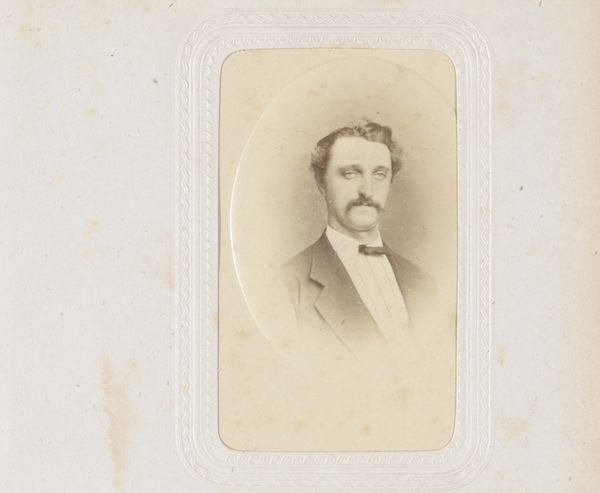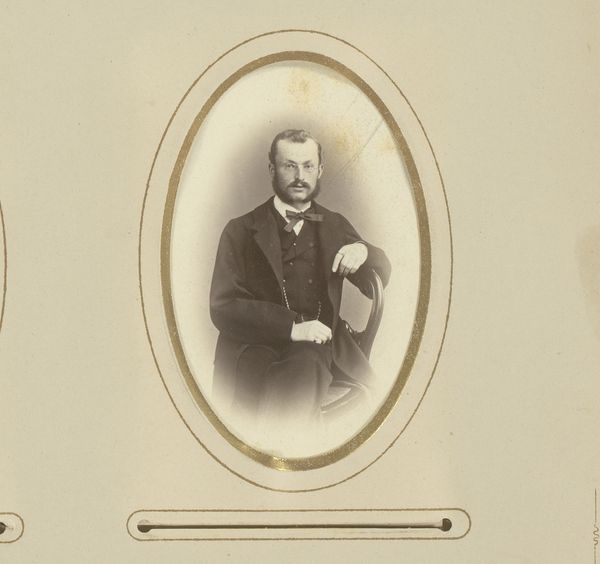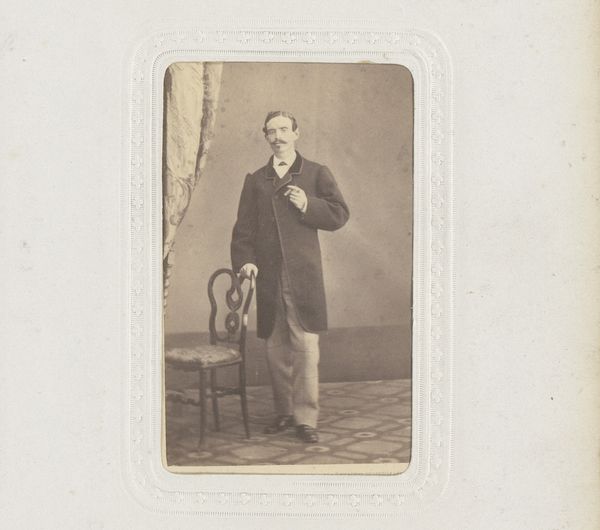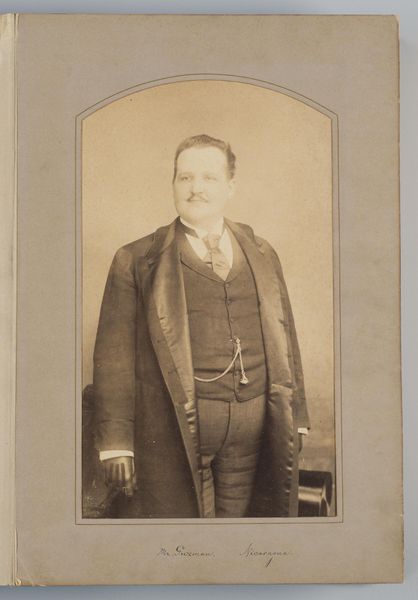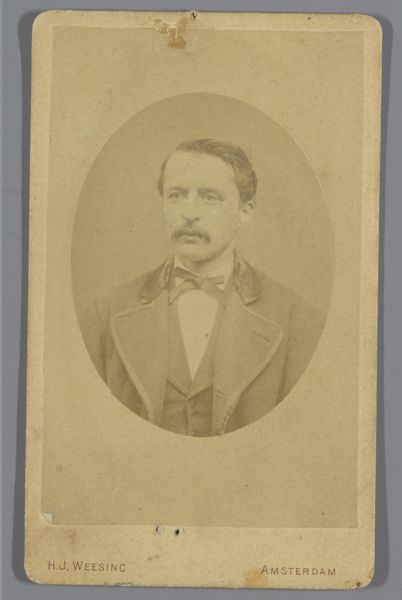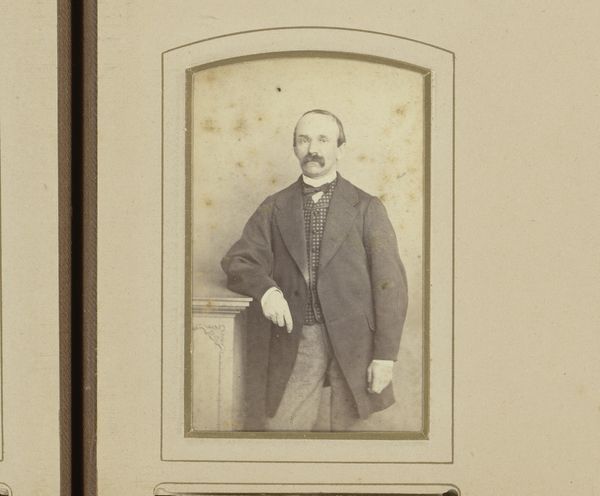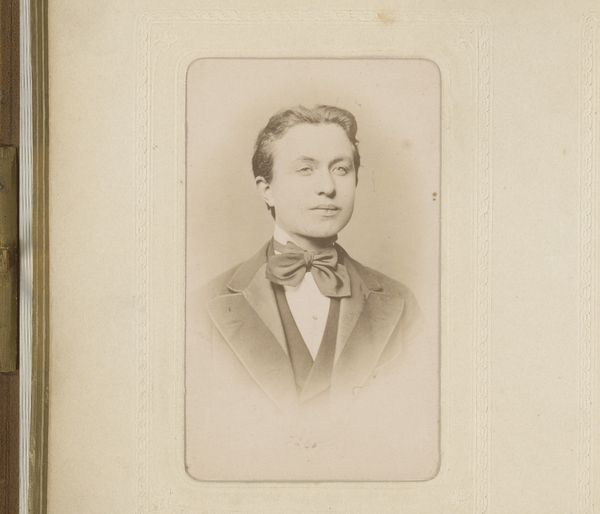
photography, gelatin-silver-print
portrait
charcoal drawing
photography
gelatin-silver-print
Dimensions: height 83 mm, width 52 mm
Copyright: Rijks Museum: Open Domain
Curator: Here we have “Portret van een zittende man,” a gelatin silver print dating from around 1850 to 1900 attributed to Lapouge. Editor: It has a somewhat melancholic air, don't you think? The sepia tones certainly contribute to that. His posture, slightly slouched... it speaks of a weariness, perhaps. Curator: What intrigues me is the photograph's existence as a commodity. This was produced and purchased, signifying not just portraiture, but the development of photography as a trade, how its accessibility shifted social norms around representation. The choice of gelatin silver print speaks to its place within mass culture of that era. Editor: I'm drawn to how the light falls across his face. There’s a very intentional contrast created between the sharply defined features and softer shadows. Note the crisp details of the clothing against the smoother rendering of his skin, it almost seems idealized despite its photographic origin. Curator: Absolutely, and consider the socio-economic implications; someone commissioning a photograph like this likely occupied a specific class position. Furthermore, the artist or the photographer's role—did they see themselves simply as capturing likeness, or contributing to shaping his projected image? Were these photographic services democratized or available only to the bourgeoisie? Editor: Setting those implications aside for a moment, do you not think the subject exudes a palpable confidence? The way he holds himself and his controlled gaze hints at something powerful despite that "weariness" I mentioned earlier. His vest, his chain—the image pulses with detail. Curator: Details undoubtedly shaped by fashion trends of the period and perhaps deliberate sartorial statements intended to impress viewers with wealth and modernism, both through material objects and technology itself. Think of the labor in mines to produce the silver itself. Editor: And what of the psychological impact the photo presents to us now? It is interesting to consider his relation to posterity through this image, and our response now to this figure. Curator: Thinking about our exchange, there's that fascinating tension—the material conditions shaping his life and our interpretations as observers. Editor: It truly enriches my understanding.
Comments
No comments
Be the first to comment and join the conversation on the ultimate creative platform.




